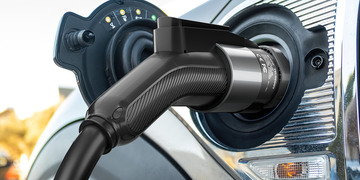Electric car charging stations and electric car charging piles (also known as charging points or charging pedestals) are both infrastructure used to recharge electric vehicles (EVs), but they differ in their design and functionality. Here are the key differences between the two:
Electric Car Charging Stations:
Stationary Infrastructure: Electric car charging stations are permanent fixtures installed at specific locations, such as parking lots, rest areas, or dedicated charging facilities.
Multiple Charging Piles: A single electric car charging station may house multiple charging piles (or charging points) within it. These individual charging points are connected to the central station.
User Interface: Charging stations typically have a user interface that allows drivers to initiate and monitor the charging process. This interface often includes a touchscreen, RFID card reader, or smartphone app integration.
Centralized Control: Charging stations can be monitored and controlled centrally, making it easier to manage multiple charging points within a single location.
Electric Car Charging Piles (Charging Points):
Individual Charging Units: Electric car charging piles, also known as charging points, are standalone units designed for single EVs to connect to and charge. They are typically located in pairs or more at charging locations.
Simplicity: Charging piles are simpler in design compared to charging stations. They usually consist of a charging connector, a cable, and a payment or authentication system.
Flexible Deployment: Charging piles can be installed in various locations, including on streets, near shopping centers, and in residential areas. They are more versatile in terms of installation.
Decentralized Operation: Each charging pile operates independently, making it necessary to manage and monitor them separately, especially in larger charging networks.
The Difference Between EV Charging Stations and EV Charging Piles
Electric car charging stations are stations where electric cars are charged, which are similar to gas stations today. Charging stations can be divided into four sub-modules according to their functions: distribution system, charging system, battery scheduling system and charging station monitoring system. Charging stations are generally divided into three ways to charge cars: ordinary charging, quick charging and battery replacement. The regular charging is AC charging using 220V or 380V voltage. The quick charging is mostly DC charging. The main equipment of the charging station includes charging machines, charging piles, active filter devices and power monitoring systems.
Public electric car charging stations and electric car charging piles are two concepts. Electric car charging piles are fixed on the ground, and they provide AC electric energy for electric cars with on-board chargers by using special charging interface and conduction mode. They have corresponding communication, charging and safety protection functions.
The main difference between electric car charging stations and charging piles lies in their design and functionality. Charging stations are typically centralized units that house multiple charging points, offer user interfaces for drivers, and allow for centralized management. Charging piles, on the other hand, are individual, standalone units designed for one vehicle at a time and are often deployed in more flexible locations. The choice between them depends on the specific needs of the charging network and the available infrastructure at a given location.
News-Telgeoot EV Charging Station
What Is the Difference Between Electric Car Charging Stations and Electric Car Charging Piles?





